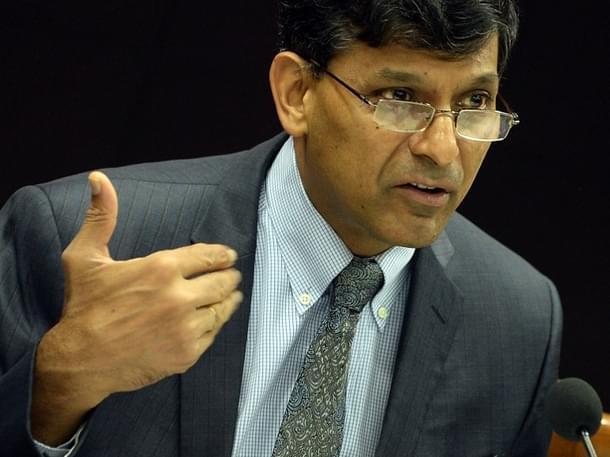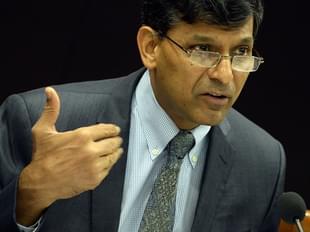Economy
Why We Don’t Feel Good And What The Growth Numbers Tell Us
SA Raghu
Apr 21, 2016, 01:20 PM | Updated 01:20 PM IST
Save & read from anywhere!
Bookmark stories for easy access on any device or the Swarajya app.


- For validating the GDP figures, we need to take a close look at data on consumption, investment, exports and government spending.
- A mere quantitative focus not only suffers from many limitations but also runs the risk of escalating social tensions.
When RBI Governor Raghuram Rajan exhorts us to look beyond growth, it reflects not just the discomfort with data but probably the pressures of governing in a metrics-driven world, where measurement, being seen to do well are more important than doing well. We are the fastest growing large economy in the world, yet do not seem to feel good about it and hence the nit-picking over whether efficiency (value added) is a better indicator of growth than volume (the old GDP formula).
The criticisms against GDP are well known, that it is merely a summation of monetary spending, not all of which is ‘value adding’; it is often likened to a calculator without a ‘minus’ key, ignoring social and non-monetary costs. But apparently GDP is the only way to lift teeming masses out of poverty and so we persist. The skepticism about GDP growth rates comes from evidences such as manufacturing growth, credit growth or corporate performance.
Therefore, we need to look under the hood and a useful way of doing so would be to examine the expenditure method (given the theoretical equivalence of all the methods- summation of expenditures, of incomes, or of outputs, this should hardly matter). The expenditure or the ‘demand side’ approach consists of four components i.e. consumption, investment, exports and government spending, all linked together in the famous GDP equation.
Data on Private Final Consumption expenditure (PFCE) shows that three major items account for almost two-thirds of expenditure, food (30 percent), housing and fuel (15 percent) and transportation (15 percent). And since PFCE contributes around 56 percent of total GDP value, it is the prime driver of GDP (much like in the developed economies).
Viewing increased spending on food, drink and transportation year on year, it may not be difficult to accept a seven percent growth rate, as the ‘evidence’ is all around us in the form of traffic congestion, urban sprawls, food and entertainment culture (not to mention lifestyle diseases from food and environment) and so on; but such a view reduces growth to a perpetual consumption machine that does not sound so glamorous. The other point to note is that these are non durable in nature, and therefore not sensitive to borrowing, unlike in the western world, which is why growth in retail bank credit in India can be a misleading indicator of demand resurgence (that is more due to banks shying away from riskier corporate loans, but that’s another story).
It is the second component, private investment that skeptics like to quote to prove otherwise. Private investment has lagged, in spite of receiving the most mollycoddling in terms of rate cuts, reforms and incentives. The Government’s explanation of twin balance sheets (stressed corporates and banks) does not sound convincing, considering the debt-equity ratio of most non-government, non-financial companies is less than unity and companies as a whole have not fared too badly, though banks are indeed struggling with bad debts.
Likewise, poor credit off take from banks in spite of successive rate cuts shows that cost of credit is not the issue. What we seem to miss is that structurally, our economy has changed as services (trade, hotels, transport, finance, real estate) now contribute over 52 percent of GDP value added as we have leapfrogged into services from agriculture, bypassing manufacturing. Not all of the sectors are capital intensive, which is why the projected 9.5 percent growth in manufacturing this year sounds incredible, given the sluggish demand and excess capacity in industry.
Coming to exports, they have been in decline for over 16 months in a row. While the Government has blamed this on muted global demand rather than loss of competitiveness, we again seem to miss out on the structural changes taking place in our trade basket- refined petroleum exports now account for as much as engineering exports. With oil dominating both sides of trade, oil prices and global demand, rather than domestic initiatives, will drive growth.
Our traditional exports are in decline, though sectors such as software and engineering have been making up. Other than the need to pay for our insatiable thirst for oil and gold, the economic compulsions for exporting may be hard to justify considering our huge domestic market. Even so, in the past, it used to be foreign aid and borrowings that propped up our current account, while now it is portfolio and FDI flows. But this has come with a cost i.e. immense pressure on the RBI to manage currency volatility. In any case, as economists would tell us, a current account surplus does not boost GDP, since it exactly equals the gap between domestic savings and investment.
That brings us to the final component - Government spending. While Government investment has significantly driven growth in the past, it has now bound itself to fiscal discipline as well as a calibrated exit from public sector and therefore policy options present conflicting choices. Greater investment would boost demand but fiscal consolidation detracts from it. Besides, multiplier effects of infrastructure spending would remain to be seen, given the limited sectoral focus (largely roads and highways). Notwithstanding this, it is inevitable that the Government would be called upon from time to time, to play the ‘investor of the last resort’ role to prop up GDP.
It would be clear that a mere quantitative focus not only suffers from the limitations that we have discussed, but also runs the risk of escalating social tensions, especially if growth has not been sustainable or equitable. A jobless growth does no good, as developed countries are discovering.
There is an added concern to inequality viz its demand-dampening effects (the so called secular stagnation hypothesis). In India, we are already witnessing the responses to the quantitative focus in the form of transport restrictions (odd even rules), food habit changes, to name just two. We have much to do to address long standing issues such as unemployment, especially rural (strangely our economic metrics almost never discuss unemployment as passionately as GDP).
There is large divergence across states in literacy, health and social indicators. Access to clean water, sanitation and hygiene are factors that are hard to capture in a metric, notwithstanding the trickle down effects of quantitative growth. Perhaps it was this that prompted the Governor to caution us against exuberance based solely on numbers. But we live in a globalized world and are bound by problems of others that leave us with restricted options. This is also why, at the global stage, the Governor has been consistently arguing for greater consensus, more responsible citizenship, calling for institutions such as the IMF to actively take up the responsibility for maintaining stability of the global system.





